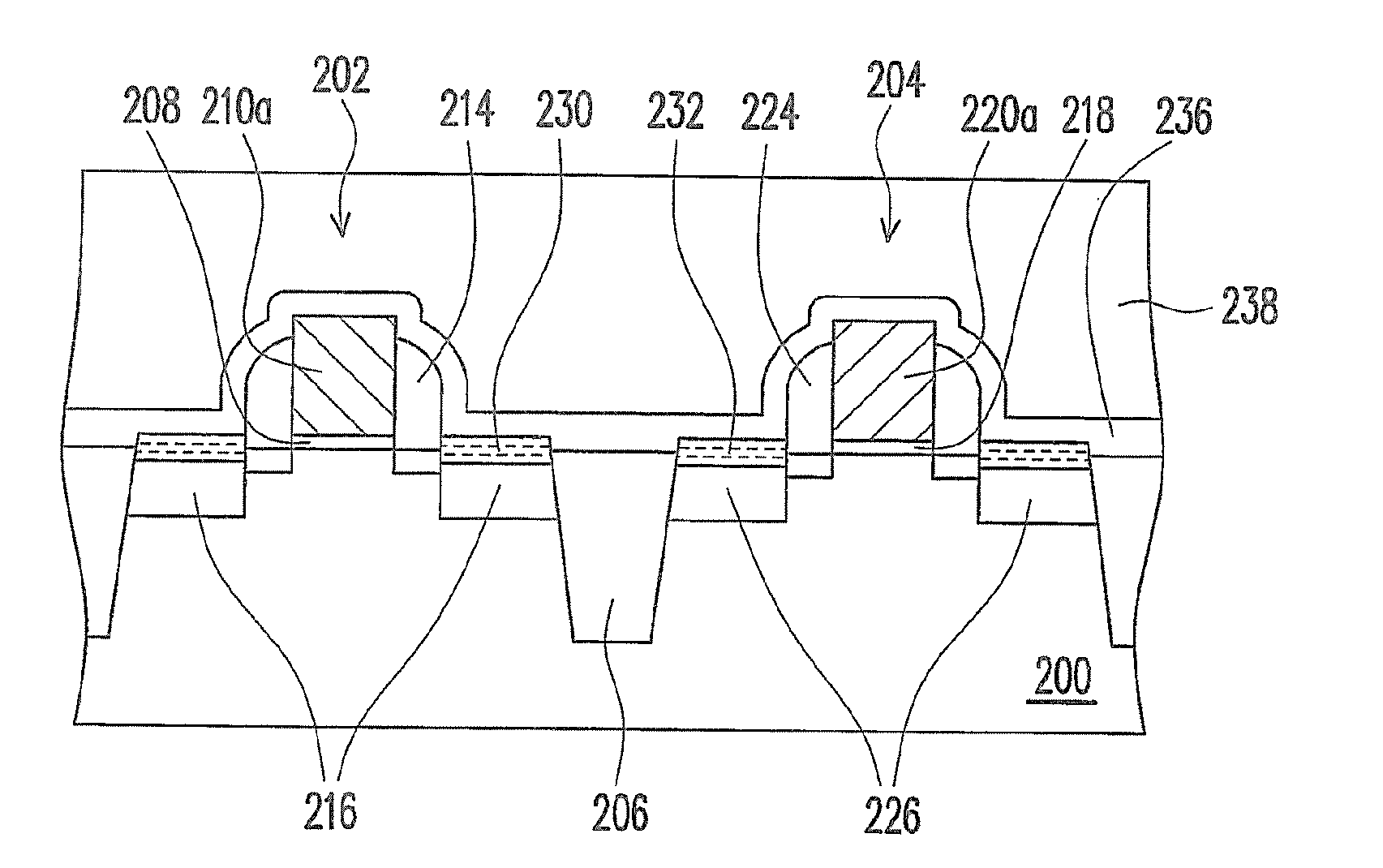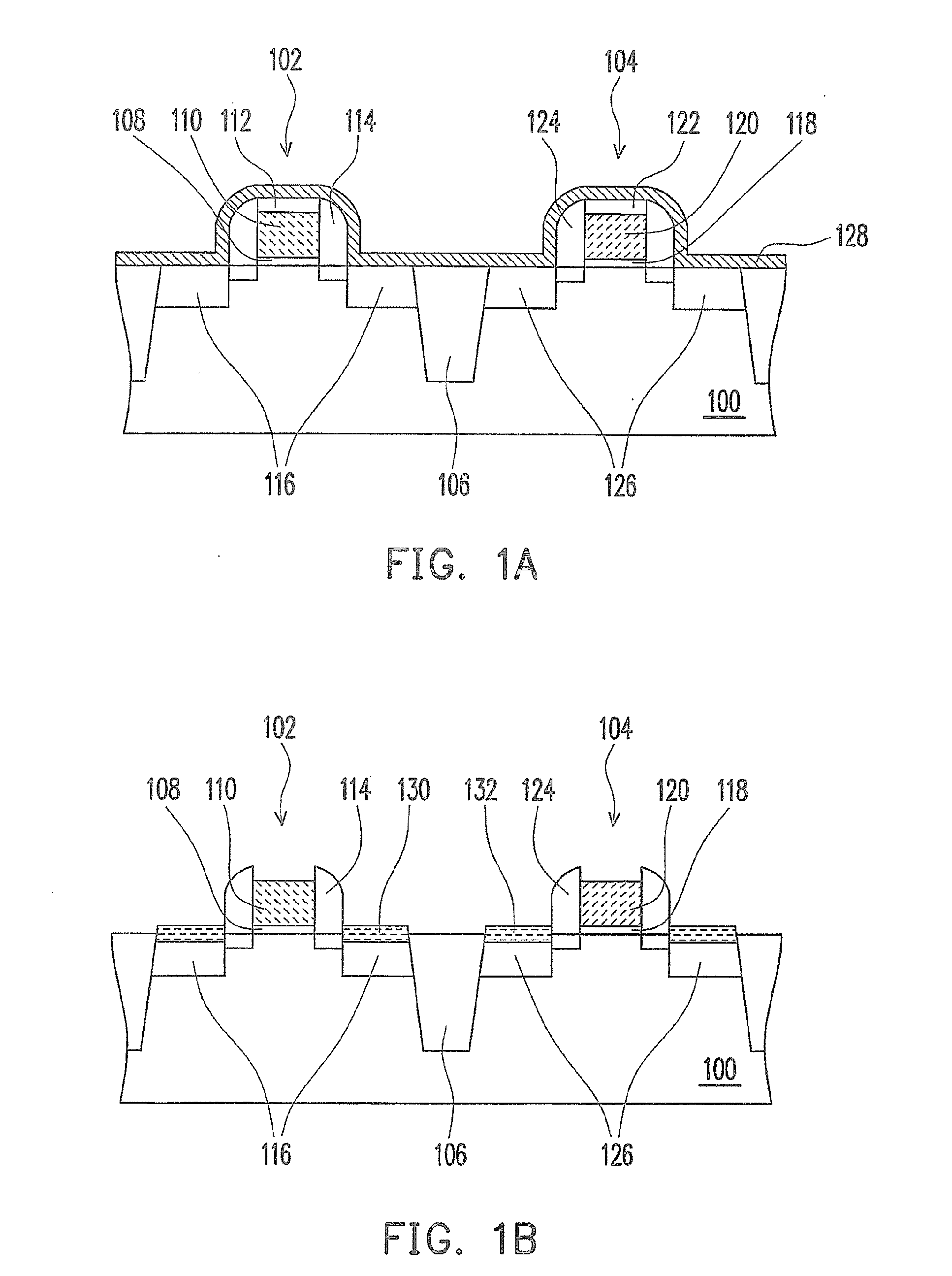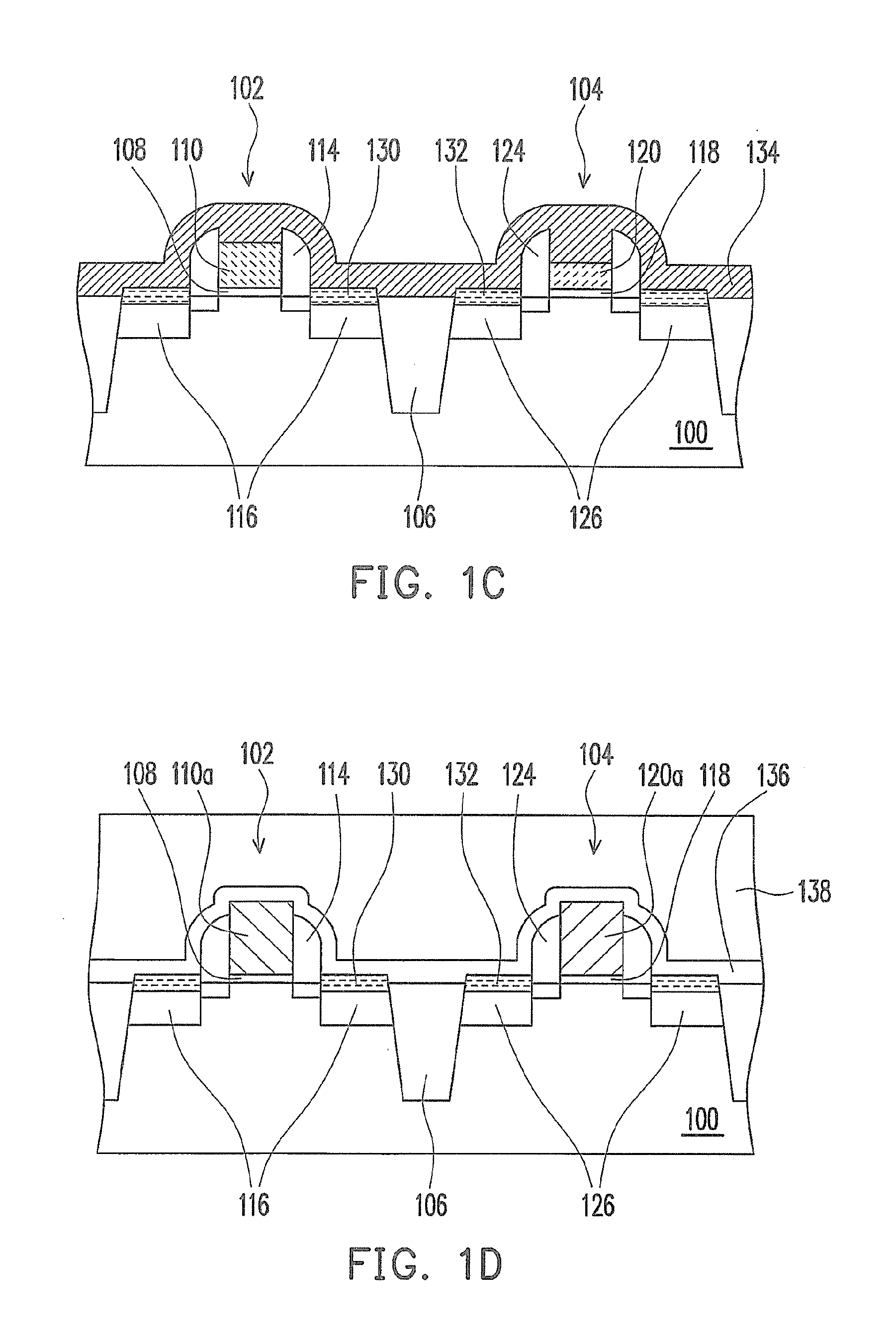Method of manufacturing semiconductor device having dual fully-silicided gate
a semiconductor device and fully-silicided technology, applied in the direction of semiconductor devices, basic electric elements, electrical appliances, etc., can solve the problems of device threshold voltage (vt) drop, reduced channel length, limited channel size of mos transistor, etc., to reduce manufacturing costs and simplify the process
- Summary
- Abstract
- Description
- Claims
- Application Information
AI Technical Summary
Benefits of technology
Problems solved by technology
Method used
Image
Examples
first embodiment
The First Embodiment
[0070]FIG. 1A to FIG. 1D are cross-sectional views of the process steps of the method of manufacturing the semiconductor device having a dual fully-silicided gate according to the first embodiment of the present invention.
[0071]Referring to FIG. 1A, first a substrate 100 is provided. The substrate 100 includes a silicon substrate, for example, an N-type silicon substrate or a P-type silicon substrate. The substrate 100 can be a silicon-on-insulating layer substrate and the like.
[0072]A transistor 102 and a transistor 104 are already formed on the substrate 100. The transistor 102 and the transistor 104 are isolated by, for example, device isolation structures 106. The device isolation structure 106 is, for example, a shallow trench isolation structure or a field oxide layer.
[0073]The transistor 102 includes, for example, a gate dielectric layer 108, a gate 110, a cap layer 112, spacers 114, and source / drain 116.
[0074]The gate dielectric layer 108 is disposed betw...
second embodiment
The Second Embodiment
[0101]FIG. 2A to FIG. 2D are cross-sectional views of the process steps of the method of manufacturing the semiconductor device having a dual fully-silicided gate according to the second embodiment of the present invention. The second embodiment is a modified process of the first embodiment, and in the second embodiment, the components same as those in the first embodiment are indicated with the same symbols, and the details thereof will not be described herein again.
[0102]Referring to FIG. 2A, first a substrate 100 is provided. The substrate 100 includes silicon substrate. A transistor 102 and a transistor 104 are already formed on the substrate 100. The transistor 102 and the transistor 104 are isolated by, for example, device isolation structures 106. The transistor 102 includes, for example, a gate dielectric layer 108, a gate 110, a cap layer 112, spacers 114, and source / drain 116. The transistor 104 includes, for example, a gate dielectric layer 118, a gat...
third embodiment
The Third Embodiment
[0113]FIG. 3A to FIG. 3D are cross-sectional views of the process steps of the method of manufacturing the semiconductor device having a dual fully-silicided gate according to the third embodiment of the present invention.
[0114]Referring to FIG. 3A, first a substrate 200 is provided. The substrate 200 includes silicon substrate, for example, N-type silicon substrate or P-type silicon substrate. The substrate 200 can also be a silicon-on-insulating layer substrate and the like.
[0115]A transistor 202 and a transistor 204 are already formed on the substrate 200. The transistor 202 and the transistor 204 are isolated by, for example, device isolation structures 206. The device isolation structure 206 is, for example, a shallow trench isolation structure or a field oxide layer.
[0116]The transistor 202 includes, for example, a gate dielectric layer 208, a gate 210, spacers 214, and source / drain 216. The transistor 204 includes, for example, a gate dielectric layer 218,...
PUM
 Login to View More
Login to View More Abstract
Description
Claims
Application Information
 Login to View More
Login to View More - R&D
- Intellectual Property
- Life Sciences
- Materials
- Tech Scout
- Unparalleled Data Quality
- Higher Quality Content
- 60% Fewer Hallucinations
Browse by: Latest US Patents, China's latest patents, Technical Efficacy Thesaurus, Application Domain, Technology Topic, Popular Technical Reports.
© 2025 PatSnap. All rights reserved.Legal|Privacy policy|Modern Slavery Act Transparency Statement|Sitemap|About US| Contact US: help@patsnap.com



